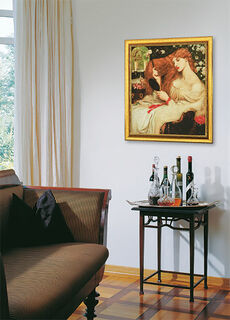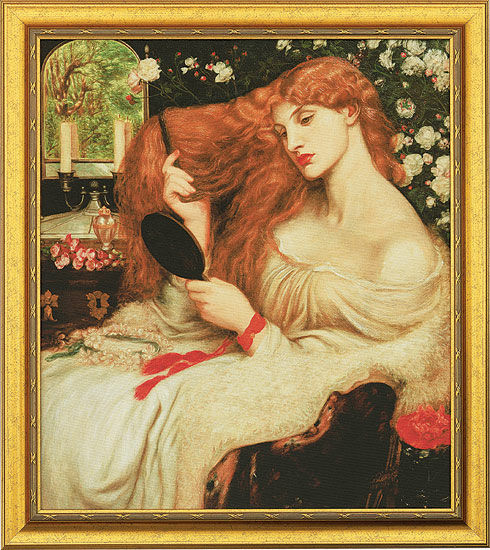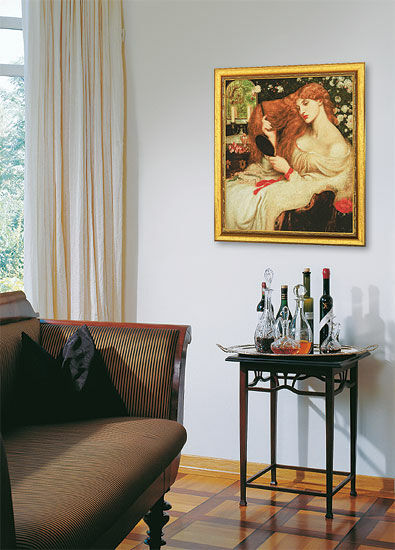Picture "Lady Lilith" (1864-66), framed


Picture "Lady Lilith" (1864-66), framed
Quick info
limited, 499 copies | certificate | reproduction, Giclée print on canvas | on stretcher frame | framed | size 93 x 83 cm (h/w)
Detailed description
Picture "Lady Lilith" (1864-66), framed
One of the frequent motifs of the Pre-Raphaelite Rossetti (1828-1882) were female figures, often as femme fatale with a biblical or mythological background. Here Jane Morris, wife of fellow painter William Morris, models as Lilith - a mythical figure that can already be traced back to Sumerian times and who iconographically became the epitome of the passionate, sensual woman.
Original: Oil on canvas Delaware Art Museum, Wilmington, Delaware.
Reproduced using the Fine Art Giclée process, worked by hand on artist's canvas and mounted on a stretcher frame. Motif surface with tactile and visible canvas texture. Limited edition of 499 copies with a certificate on the back. In handmade, golden framing. Size 93 x 83 cm (h/w).
Giclée = derived from the French verb gicler "to squirt, spurt".
The giclée method is a digital printing process. It is a high-resolution, large-format printout on an inkjet printer with special different-coloured dye- or pigment-based inks (usually six to twelve). The colours are fade-proof, i.e. resistant to harmful UV light. They have a high richness of nuance, contrast and saturation.
The giclée process is suitable for art canvases, handmade and watercolour paper as well as for silk.






